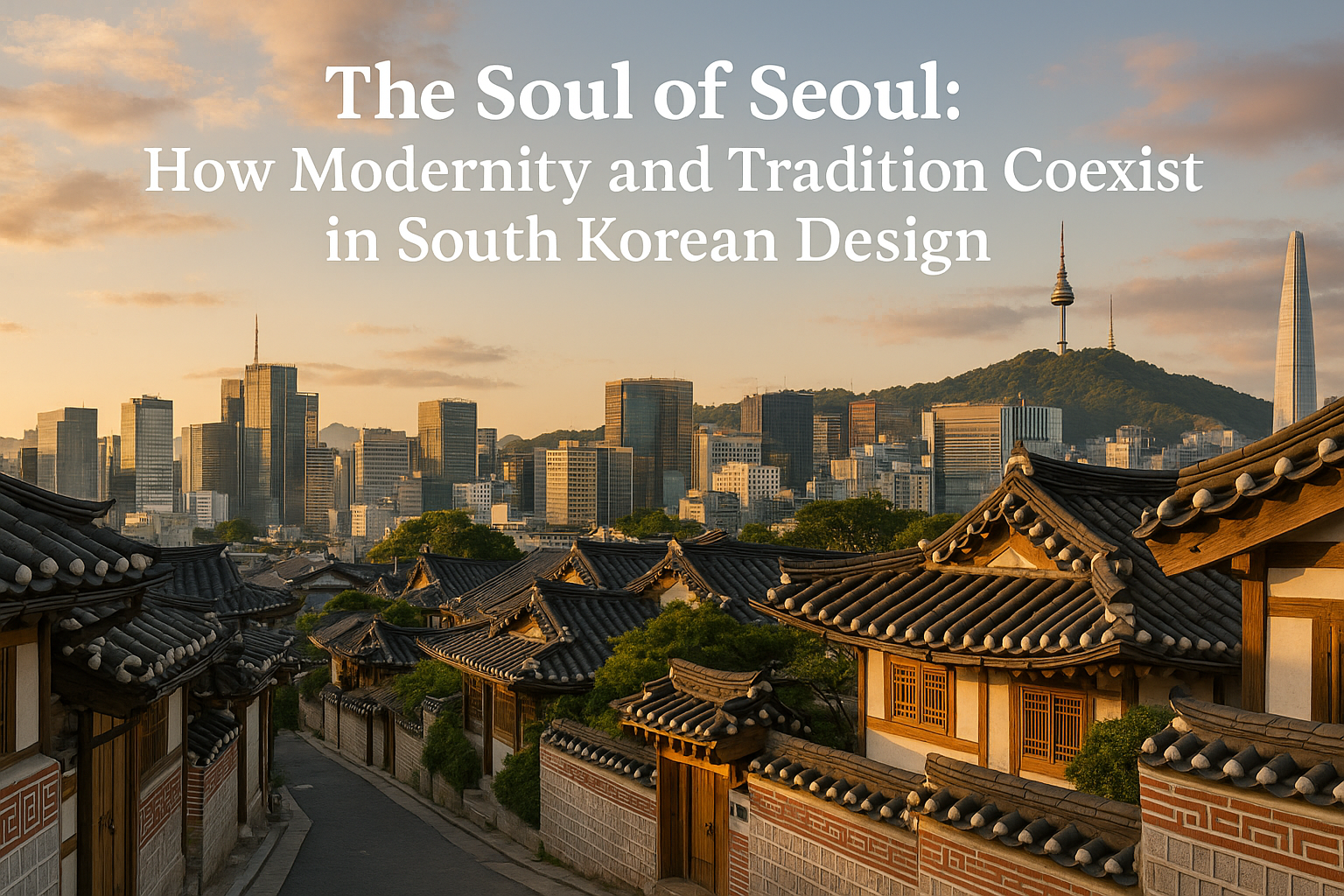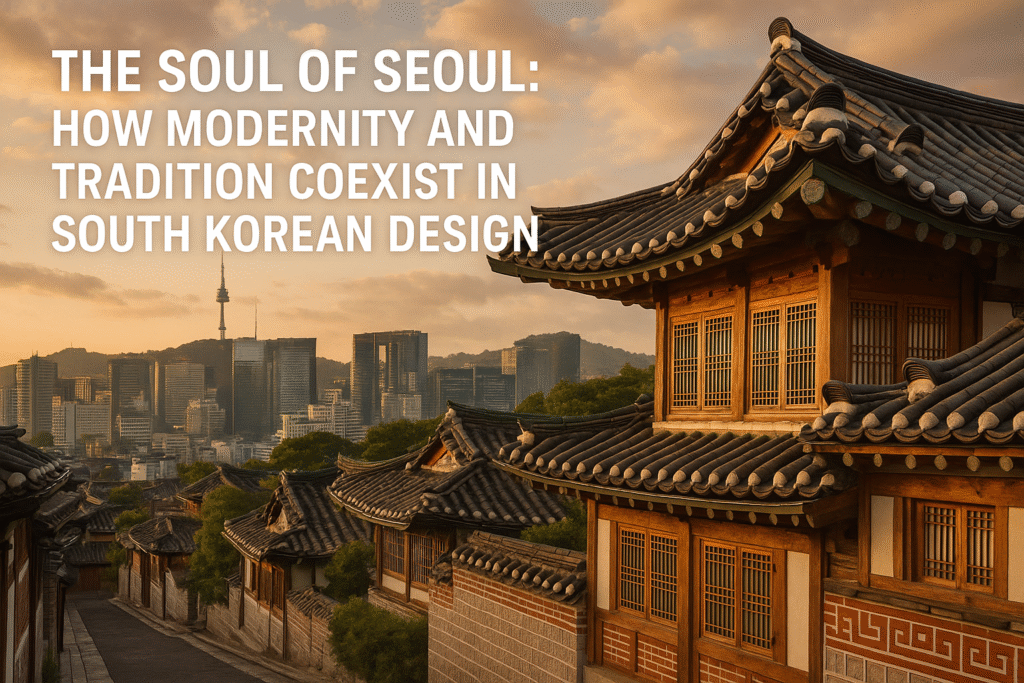In the bustling heart of South Korea lies Seoul, a city where the echoes of ancient dynasties harmonize with the rhythm of modern innovation. Here, Seoul architecture is a captivating symphony of contrasts, where dazzling skyscrapers rise alongside ancient palaces, and cutting-edge design finds inspiration in time-honored traditions. This architectural tapestry weaves a story of a city that honors its past while boldly embracing the future, creating a vibrant and dynamic urban landscape that captivates the soul.
The Juxtaposition of Old and New
Seoul architecture is a testament to the city’s ability to seamlessly blend the old with the new. As you wander through the city, you are as likely to stumble upon a centuries-old hanok—a traditional Korean house—as you are a sleek, modern high-rise. The hanoks, with their wooden beams and curved roofs, offer a serene contrast to the glass and steel towers that define the city’s skyline. This juxtaposition creates a unique urban scenery that is both charming and awe-inspiring, where every street tells a story of resilience and reinvention.
The preservation of these historical structures amid rapid modernization is no accident. Seoul’s city planners have long recognized the importance of maintaining cultural heritage. Initiatives to restore and repurpose hanoks, for instance, have breathed new life into these traditional dwellings, transforming them into cultural hubs, teahouses, and boutique hotels that invite residents and visitors alike to experience a slice of Korea’s rich history.
Innovative Skyscrapers Defining the Skyline
The modern face of Seoul architecture is perhaps best epitomized by its skyline, a burgeoning collection of skyscrapers that punctuate the city’s horizon. Among these, the Lotte World Tower stands out as a symbol of architectural ingenuity and ambition. As the fifth tallest building in the world, it is a marvel of engineering, blending cutting-edge technology with eco-friendly design principles. Its sleek silhouette is a testament to Seoul’s forward-thinking approach to urban development.
Yet, these skyscrapers are not merely feats of architectural prowess; they are also designed with sustainability in mind. Green roofs, energy-efficient systems, and vertical gardens are increasingly common features, reflecting Seoul’s commitment to environmentally responsible architecture. This dedication to sustainability ensures that the city’s rapid growth does not come at the expense of the environment, setting a benchmark for urban centers worldwide.
Cultural Landmarks Preserving Heritage
Seoul’s dedication to preserving its cultural heritage is evident in its numerous landmarks, each an architectural gem that offers a window into the city’s storied past. The Gyeongbokgung Palace, for instance, is a breathtaking embodiment of Korean traditional architecture, with its grand gates and tranquil gardens offering a serene escape from the city’s hustle and bustle. As Seoul’s largest palace, it stands as a proud reminder of the Joseon Dynasty’s historical significance.
Nearby, the Changdeokgung Palace, recognized as a UNESCO World Heritage site, showcases the harmonious relationship between nature and architecture. Its secret garden, renowned for its exquisite landscaping, exemplifies the traditional Korean appreciation for nature, where design and natural surroundings are inextricably linked. These cultural landmarks not only preserve Seoul’s history but also enrich the city’s architectural diversity.
The Influence of Modern Design Movements
The influence of modern design movements on Seoul architecture is palpable, infusing the city with a dynamic and contemporary flair. The Dongdaemun Design Plaza, designed by the late Zaha Hadid, stands as a testament to the city’s embrace of innovative design. Its fluid, curvilinear form is as much a work of art as it is a functional space, housing exhibitions, events, and a design museum that celebrate creativity and innovation.
This avant-garde approach extends beyond individual buildings, influencing entire districts. In neighborhoods like Gangnam, modern design principles guide the development of commercial spaces and residential complexes alike, resulting in a vibrant urban environment that caters to both functionality and aesthetics. Seoul’s ability to incorporate modern design while respecting traditional elements is key to its architectural allure.

The Role of Public Spaces
Public spaces in Seoul are thoughtfully designed to foster community interaction and enhance the urban living experience. The Cheonggyecheon Stream is a prime example of this, a once-covered waterway transformed into a 10.9-kilometer-long oasis in the heart of the city. This revitalization project not only restored a vital piece of Seoul’s natural environment but also created a tranquil space for residents to relax and reconnect with nature.
Similarly, the Seoul Forest, an expansive urban park, offers a green refuge amidst the concrete jungle. Its design incorporates recreational areas, ecological spaces, and cultural facilities, making it a versatile space that caters to diverse interests. These public areas exemplify Seoul’s commitment to creating livable spaces that prioritize the well-being of its citizens.
Seoul’s Architectural Education and Innovation
Seoul’s architectural landscape is further enriched by its robust educational and research institutions, which nurture future generations of architects and designers. The Korea National University of Arts and Seoul National University are at the forefront of architectural education, fostering an environment that encourages innovation and exploration.
Collaborations between academia and industry have led to groundbreaking research in sustainable architecture, urban planning, and design technology. These efforts not only contribute to the evolution of Seoul architecture but also position the city as a leader in global architectural discourse. Through education and innovation, Seoul continues to push the boundaries of what is possible in urban design.
The Role of Technology in Shaping Seoul’s Architecture
Technology plays an integral role in shaping the future of Seoul architecture, driving advancements that enhance both form and function. Smart buildings equipped with cutting-edge technology are becoming increasingly common, offering solutions for energy efficiency, security, and connectivity. These innovations are not just about convenience but are part of a larger commitment to creating sustainable urban environments.
Moreover, the integration of technology into architectural design allows for greater customization and flexibility, enabling architects to create spaces that adapt to the changing needs of their occupants. This forward-thinking approach ensures that Seoul remains at the forefront of architectural innovation, continually evolving to meet the demands of a fast-paced, modern world.
The Global Influence of Seoul Architecture
Seoul architecture has emerged as a source of inspiration for architects and designers worldwide, its unique blend of tradition and modernity offering valuable lessons in cultural preservation and innovation. The city’s architectural narrative is one of resilience, adaptability, and vision, qualities that resonate with urban centers facing similar challenges.
As Seoul continues to expand its influence on the global stage, its architectural achievements serve as a blueprint for balancing heritage with progress. By showcasing how modernity and tradition can coexist harmoniously, Seoul sets a precedent for cities around the world, demonstrating that honoring the past does not preclude embracing the future.
Conclusion
In the ever-evolving cityscape of Seoul, architecture tells a story of a city that reveres its history while boldly charting its course towards the future. The seamless integration of traditional and modern elements creates a dynamic urban environment that is both mesmerizing and inspiring. As Seoul architecture continues to evolve, it not only shapes the city’s identity but also leaves an indelible mark on the global architectural landscape. Here, in the soul of Seoul, the past and the present coexist in a harmonious dance, crafting a narrative that is as timeless as it is innovative.

Recent Posts
15 Floor Plan Graphic Styles That Will Elevate Your Presentation Game
The Role of Shadows in Architectural Storytelling
When Furniture Becomes Architecture: Blurring the Line